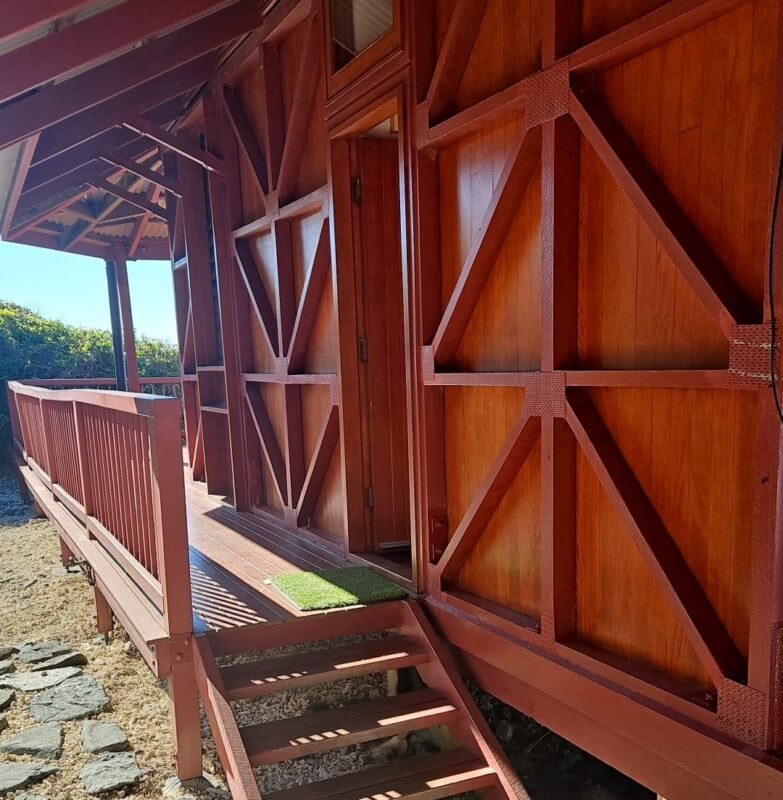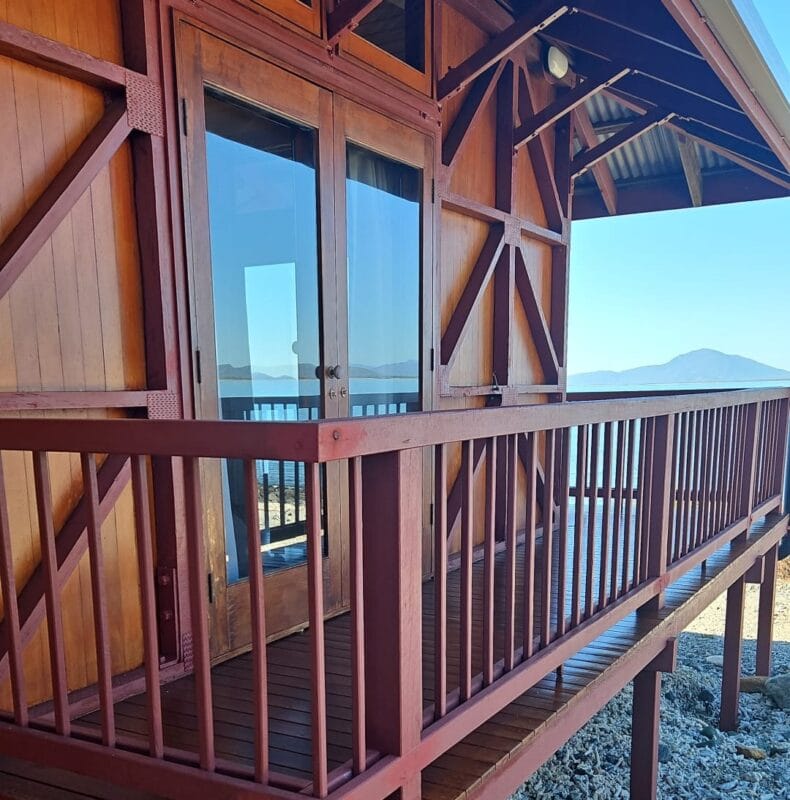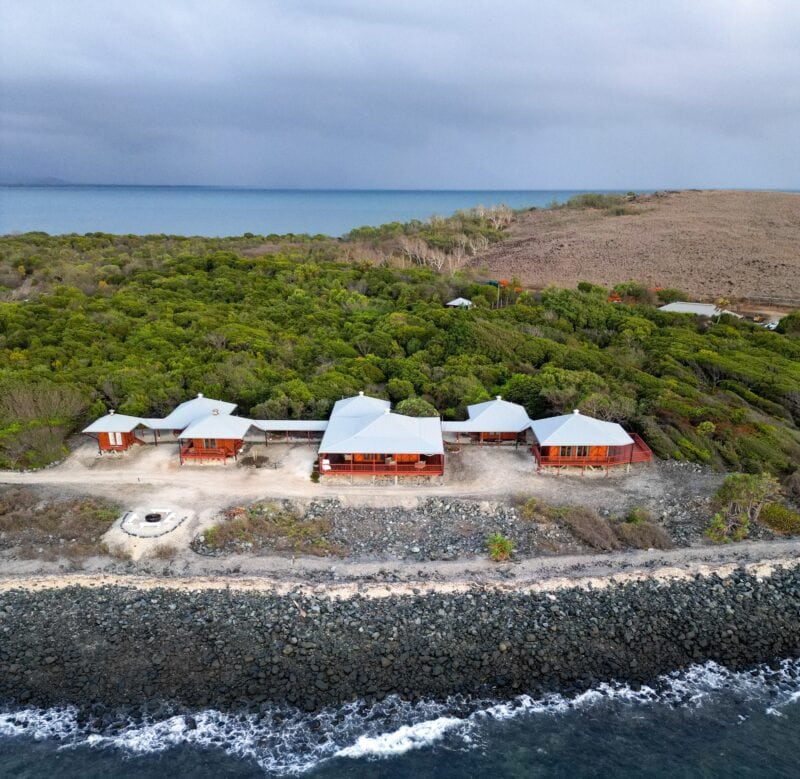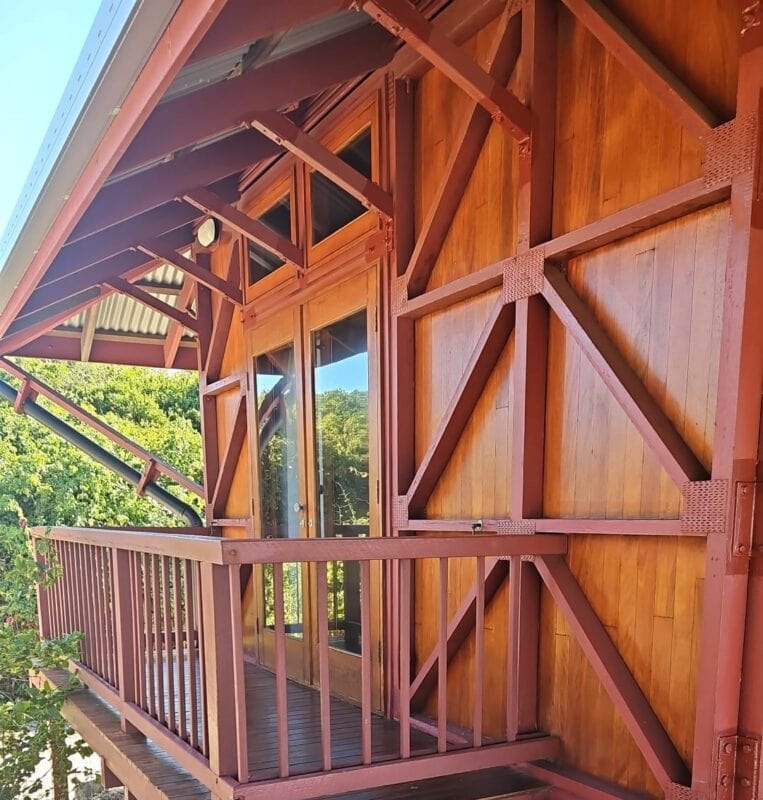The Creation of Camp Island Lodge: An Architect's Journey
Camp Island Lodge was the winner of the:
1988 House of the Year for Excellence award
Awarded by the Australian Institute of Architects - Queensland
In the 1980s, architect Russell Hall embarked on an ambitious project that would meld traditional Queensland architecture with the unique challenges of a remote island location. Commissioned by Bruce Judge, a New Zealand field hockey player who competed in the 1964 and 1968 Summer Olympics, Hall was tasked with designing and building Camp Island Lodge.
When Hall first visited the island, he noticed the low-height windswept trees. However, he quickly appreciated the inherent beauty of the island's vegetation, which seemed perfectly suited to the environment. At that time, the island had only one building, the caretaker's residence, which was demolished to make way for a new structure.
Bruce Judge's gardener, who later became the island's caretaker, recommended Hall for the project. With the luxury of a relaxed client who was open to creative freedom and not fixated on specific designs, Hall was able to craft the lodge according to his own vision while still honouring Judge's primary requests of a premises where his family could live in one of the residential cabins, and visitors in the others.
The build needed to harmonise with the existing environment, rather than further weaken it. To accomplish this, the residence was divided into individually roofed pavilions connected by covered walkways. This design choice prevented the visual impact of a single dominating structure on the islandscape, whilst also evoking the romantic image of a village by the sea.

The Lodge features four charming bungalows, each offering a spacious double bedroom with an en-suite bathroom. These cosy retreats are connected by scenic timber walkways that lead to the heart of the lodge—the main communal area. Here, guests can gather in the welcoming living and dining spaces, complete with a fully equipped kitchen. Every building boasts a private veranda, where one can relax and soak in those blue ocean views.
Hall's design continued the traditional Queensland architectural style, incorporating exposed studs and single-skin walls with a strong timber frame and tongue-and-groove vertical boards. The economical, square-shaped design of the lodges, are not only aesthetically pleasing, but also provide resilience against the cyclones and turbulent weather common in Queensland.
Hall fondly recalls the first structure built on the island: a modest shed next to the new caretaker's house. During construction, this shed became the living quarters for the workers, who operated on a three-weeks-on, one-week-off rotation. The entire project, which began in 1986 and concluded in 1987, took around a year to complete.
Hall himself spent around seven months on the island, stepping into the role of project manager after the original manager departed. Despite the various challenges they faced, he warmly remembers the camaraderie that developed among the workers.
One of Hall's most cherished memories from his time on the island was sleeping under the stars in “the best bedroom he ever slept in”. Seeking respite from the noise of the workers' quarters, he carried an old door up the island hill and slept there with just a sleeping bag. The tranquillity and isolation of those nights, with the vast sky above, made him feel as if he were the only person on the island.
Transporting materials to the island proved challenging, as everything had to be delivered by barge from the mainland. The most significant challenge, however, was ensuring a reliable water supply. A prolonged dry period during the build necessitated regular deliveries of drinking water by barge, so substantial underground water tanks were eventually installed to provide a steady water source.
An undersea cable, costing around three-quarters of a million dollars (and that was in the 1980’s!), was laid to supply electricity. Unfortunately, a cyclone damaged the cable shortly after installation, delaying the project until it could be repaired. Hall noted that experimenting with wind power would have been a good move back then, but budget and time constraints prevented this. In late 2023, the island installed solar panels to provide green power.
It became apparent that the island boasted an abundance of natural patterns, particularly in the coral. These patterns were integral and inspired the design of the ceiling vents.
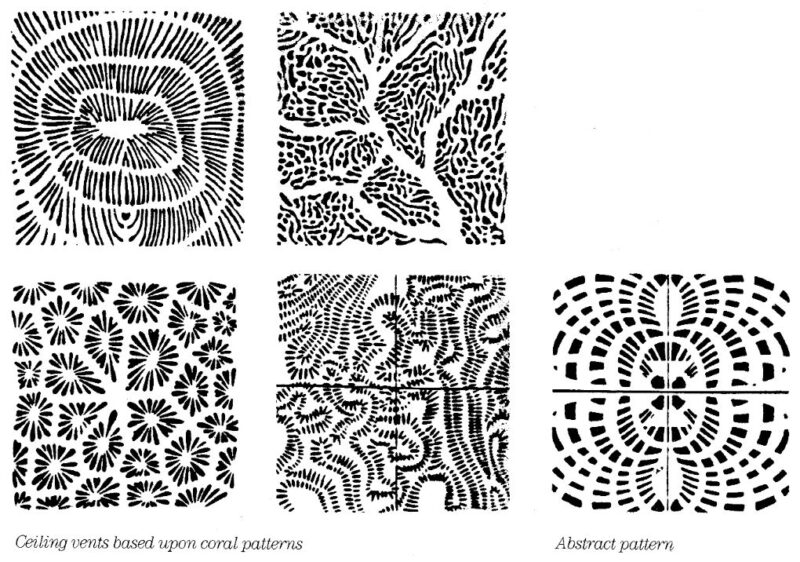
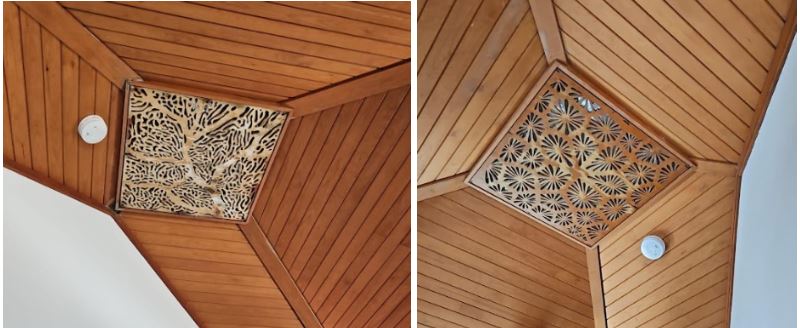
Following the completion of Camp Island Lodge, there was interest from other islands in replicating the Queensland-style architecture. However, these projects never came to fruition. As a result, Camp Island Lodge stands as a unique architectural achievement in Queensland, offering a rare and inspiring destination for architecture enthusiasts and visitors alike.
Russell Hall's experience on Camp Island Lodge was marked by challenges, innovation, and a deep appreciation for the natural beauty of Queensland's islands. The lodge, completed in 1987, stands as a testament to his architectural vision and resilience.
